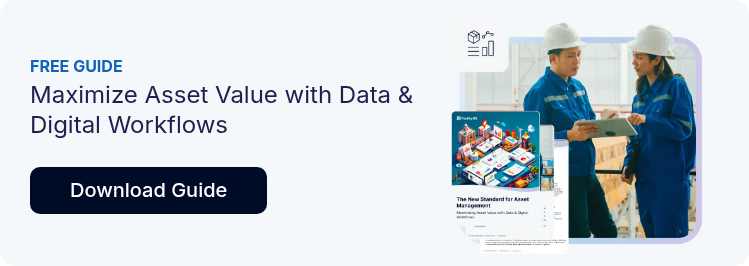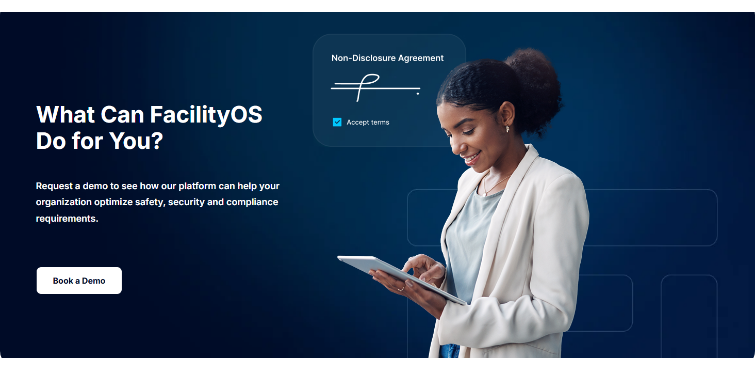How to Track Internal Asset Movement Without Disrupting Operations
In most operational environments, assets are constantly in motion. They move between job sites, across facilities, and from storage to active use. Organizations often focus on tracking what they own, far less on asset location and how assets move throughout the day.
This creates a common problem. Production slows, not because of a lack of equipment, but because the equipment is not in the correct location. Teams spend too much time searching for tools, delaying operations and schedules. Valuable assets remain idle simply because they are not visible when needed.
These issues are easy to overlook in traditional asset management approaches. But over time, they introduce avoidable delays, reduce productivity, and lead to unnecessary spending on duplicate resources.
What Are Traditional Asset Management Methods?
Traditional asset management methods rely on manual tracking tools such as spreadsheets, physical logbooks, and basic barcode scans in legacy systems record check-ins or check-outs but lack detailed movement history. These approaches focus on listing what assets are owned, where they are assigned, and whether they are due for maintenance or replacement. While these methods may capture static asset data, they often lack accurate full visibility into asset movement or usage across departments and sites.
The Operational Cost of Poor Movement Tracking
Poor asset movement tracking creates hidden costs that grow over time. Without accurate, up to date visibility into the last known location and movement history of mobile assets, organizations face delays, communication breakdowns, and inefficient handoffs between teams and locations.
Most teams know what equipment they own, but fewer can identify a specific item’s location during a shift. That lack of visibility results in time spent searching, duplicate purchases, and assets sitting idle when they could be in use. These visibility failures lead to slower workflows, missed timelines, and higher operational costs.
When teams don’t know where assets are, they are forced to work around the unknown. The longer it takes to track something down, the longer production is delayed. Over time, this impacts labor efficiency, increases downtime, and introduces risk, especially in regulated environments where accountability and chain of custody matter.
Improving asset tracking starts with gaining clear, consistent visibility into the location history and usage patterns of equipment. With that foundation, teams can make faster decisions, reduce inefficiencies, and prevent issues before they affect production.
What Is a Digital Internal Asset Management System?
A digital internal asset management system is a tool used to track the movement, location, and availability of mobile assets within an organization. It is not an inventory management system, which is designed to track stock levels and quantities. In contrast, an internal asset management system focuses on how assets move, including where they are, where they have been, and who is using them.
This type of system is ideal for organizations that rely on shared tools, equipment, carts, or other physical assets that move between teams, departments, or sites. Instead of relying on spreadsheets, manual logs, or check-in/check-out sheets, a digital system gives teams access to live information about asset status.
Core capabilities often include barcode scanning with integrated movement logs to provide up-to-date records, request workflows, and automated updates when assets are checked out, returned, or transferred. These features support better team coordination, enforce chain of custody protocols, and reduce the risk of lost, delayed, or duplicated assets.
By tracking how assets move rather than just what assets exist, organizations improve accountability, speed up internal logistics, and ensure that assets are available when and where they are needed. Unlike basic asset tracking, which records ownership or condition, movement tracking focuses on asset flow: where items are, how they’re transferred, and how long they remain in use. This shift from static records to accurate movement tracking helps create more efficient and reliable operations across the organization.
Movement Visibility as a Strategic Capability

Most asset systems focus on inventory, condition, or ownership. However, movement becomes the most vital variable to track when mobile assets are used across multiple locations or teams.
Movement visibility answers questions like:
- What is the last known location of this asset?
- Where was the asset last scanned?
- How long has it remained at its current known location?
- Has it followed its expected movement path based on scan history?
- Are there any delays or deviations based on recent scan activity?
Beyond operational gains, movement visibility supports long-term planning. Historical movement data uncovers trends in asset usage, highlights inefficiencies, and enables smarter resource allocation across sites.
The benefits of movement tracking become even more clear when applied to specific operational contexts.
Industry Examples of Smarter Movement Tracking
Movement tracking creates measurable value in any setting where mobile assets support daily operations. From construction and warehousing to manufacturing and facility management, having visibility into asset location and movement helps teams avoid delays, reduce waste, and stay on track.
ConstructionEquipment constantly shifts between active job sites, staging areas, and storage in construction. Crews rely on generators, lifts, barriers, and specialty tools to be in place when scheduled work begins. Without movement visibility, assets are often left behind, tied up at other locations, or incorrectly assumed to be available. By tracking asset movement across sites, teams can coordinate equipment handoffs more efficiently, reduce downtime caused by missing resources, and avoid the cost of renting or purchasing duplicates. |
|
Warehousing & DistributionBusy warehouses and distribution centers depend on shared equipment like pallet jacks, carts, and containers to keep materials flowing. These assets rush across docks, aisles, and storage zones, often with little documentation or oversight. When a team cannot locate equipment, even for a few minutes, fulfillment schedules can slip. Movement tracking provides up to date location updates, helping teams reduce search time, streamline transitions between shifts, and prevent critical equipment from being tied up in the wrong place. |
|
ManufacturingSmall delays can have a cascading impact on a production floor. When workstations lack the materials they need, often due to untracked movement, production slows. Movement tracking gives manufacturing teams visibility into the location of key assets, such as mobile equipment, portable tools, and test or measurement devices. With accurate tracking of how assets move through the facility, teams can avoid production bottlenecks. |
|
Facilities & Campus OperationsLarge facilities and campuses rely on shared equipment that often moves between buildings, departments, or outdoor zones. Items like signage, carts, and event infrastructure are critical to day-to-day operations, but are frequently misplaced or stored in the wrong location. Without tracking, facilities teams spend unnecessary time searching for these items or responding to duplicate requests. Movement visibility makes managing shared resources easier, coordinating across departments, and responding quickly when needs change, without overextending the team. |
|
HealthcareHospitals and healthcare campuses depend on the timely availability of mobile medical assets throughout the day. Equipment like stretchers, IV stands, portable imaging devices, or specialty carts is regularly shared between departments and must be readily available. When assets' movements are unclear, clinicians and staff lose valuable time, which can delay patient care and outcomes. Movement tracking helps healthcare teams locate essential equipment and supplies more quickly, reduce hoarding, and coordinate more effectively across care units. When critical assets, such as medical devices or medications, are not located where expected, patient care can be delayed, negatively impacting outcomes. A dependable tracking system enables quicker response times and ensures patients receive timely, uninterrupted care. Additionally, it aids in compliance efforts by maintaining a clear record of asset movement throughout the facility. |
|
Financial InstitutionsBanks and financial institutions manage a range of mobile internal assets across branches, such as secure bags, equipment, and sensitive materials. These items often move between locations under strict compliance requirements. Without proper tracking, institutions face chain of custody risks, potential loss, and audit failures. With movement tracking, teams gain a reliable record of asset location and handoff history, improve internal accountability, and reduce time spent managing transfers across the branch network. |
No matter the industry, clear visibility into asset movement transforms operations—reducing delays, strengthening accountability, and keeping teams and resources moving in sync.
Our recommended solution? Implement a robust digital system designed specifically for managing asset logistics that supports accurate visibility, secure tracking, and efficient coordination across teams and locations. Consider FacilityOS’s logistics and asset management solution, LogisticsOS.
How LogisticsOS Improves Asset Movement Without Operational Disruption
Take control of your internal asset operations with FacilityOS’s logistics and asset management solution, LogisticsOS, designed for seamless asset tracking and management. From equipment and tools to capital assets, LogisticsOS simplifies the process with intuitive barcode scanning and secure data capture. Real-time status updates, automated notifications, and alerts keep your team informed, while robust tracking ensures accountability at every step. Eliminate inefficiencies, reduce asset loss, and gain confidence in a system that supports accurate, reliable workflows.
- Notifications to Keep Teams Aligned: Automated email/SMS notifications alert team members when assets are checked out, in transit, or ready for use. With instant updates at every stage, communication is seamless, and downtime is reduced.
- Secure Tracking and Comprehensive Logs: Capture every action in a secure, digital log. Every movement is documented from initial asset request to final return, ensuring full accountability and minimizing the risk of misplaced items or miscommunication.
- Efficient Workflows for Faster Asset Access: Simplify workflows with barcode scanning and digital request forms. Internal teams can quickly request, locate, access, and return assets, reducing wait times and ensuring a more efficient operation.
- Insights for Strategic Asset Management: Leverage analytics and powerful dashboards to uncover inefficiencies, monitor asset utilization, and optimize processes. LogisticsOS empowers you with actionable insights to maximize resource efficiency and reduce costs.
Asset management software like LogisticsOS
modernizes asset tracking by automating inventory processes, ensuring secure data handling, and providing centralized access to asset information. It empowers teams to work more efficiently and maintain the organization.
LogisticsOS solves deeper operational challenges of visibility, coordination, and asset utilization. For teams managing high volumes of mobile assets, the shift from manual tracking to digital oversight delivers immediate and long-term gains.
8 Key Benefits of Using a Digital System to Manage Asset Movement
Organizations that track internal assets need more than spreadsheets, paper logs, or verbal updates to stay efficient. A digital system purpose-built for asset movement management offers a faster, more accurate way to track where assets are, how they move, and whether they’re being used effectively.
Here are the core benefits of switching to a digital system, like LogisticsOS, for asset movement tracking:
- Up to Date Location Data Improves Asset Availability: Digital tracking systems provide teams immediate access to asset location. Teams can instantly know the assets' last known location without relying on radio calls or manual searches. This increases asset availability and reduces time lost to locating missing items.
- Centralized Dashboards Reduce Miscommunication: With a shared dashboard, all teams access the same information simultaneously. Operations, logistics, and facilities staff no longer need to coordinate via email or check-ins to confirm where equipment is or when it’s available. Everyone works from a single source of truth.
- Automated Alerts Prevent Delays and Oversights: Digital systems can automatically flag issues like idle equipment, missing assets, or unexpected detours. Instead of finding out about a problem after it causes delays, teams can act on alerts in real-time. The solution helps prevent production bottlenecks and keeps work moving forward.
- Usage Data Helps Reduce Waste and Duplicate Purchases: Historical movement data shows how frequently assets are used, where they tend to sit idle, and whether additional units are needed. This streamlined process makes it easier to identify underused equipment, avoid over-purchasing, and maximize the value of existing resources.
One example of these benefits in action comes from a Texas-based financial institution.
Success StoryInternal Asset Control at Scale
A Texas-based financial institution used LogisticsOS to gain better control over internal asset movement across 200+ branches. Before implementation, manual processes made it difficult to track branch bags and other internal assets, leading to compliance concerns and operational delays. With LogisticsOS in place, the bank established clear chain of custody records, improved accountability, and significantly reduced time spent managing and locating internal assets across locations.
Read the Texas bank success story → - Easier Handoffs Between Shifts and Departments: In fast-moving environments, assets change hands frequently. A digital system simplifies transitions between teams by providing the most recent handling record for each asset. This seamless handoff reduces confusion, increases accountability, and speeds up shift changes or interdepartmental work.
- Scalable Across Sites and Teams: As organizations grow, managing mobile assets across multiple sites or buildings becomes more complex. A digital system can scale with your operations, offering location-level tracking, role-based access, and integrated reporting that supports local and enterprise-wide decision-making.
- No Workflow Overhaul Required: Modern systems like LogisticsOS are designed to work in the background without disrupting teams' operations. There’s no need to change tools or retrain entire departments. Data is captured and surfaced automatically, so teams gain clarity without taking on extra tasks.
- Supports Chain of Custody & Compliance Requirements: Ensure full traceability with digital logging of every asset handoff and location update. This level of documentation supports internal accountability and helps meet audit or compliance standards in regulated environments.
Movement Visibility Is the Next Step Forward
In environments where equipment and materials constantly move, tracking movement is not a nice to have feature. It is a foundational part of keeping operations running smoothly.
Digital systems that track asset movement accurately help teams stay aligned, avoid delays, and better use their existing resources. They give managers a clearer view of how assets are used across departments and locations, without requiring significant process changes.
As organizations grow, so does the complexity of keeping assets visible and accessible. Investing in a digital approach to movement tracking creates lasting value by improving coordination, reducing waste, and helping teams respond faster when conditions change.
Stay updated with industry insights, success stories, and more by following us on social media for the latest FacilityOS content.
Stay updated with industry insights, success stories, and more by following us on social media for the latest FacilityOS content.
Table of Contents
Jeffrey Kinzler



 Follow us on Facebook
Follow us on Facebook  Follow us on X
Follow us on X
 Follow us on LinkedIn
Follow us on LinkedIn